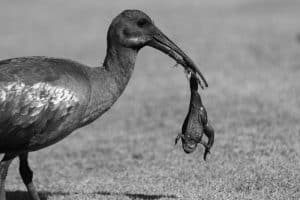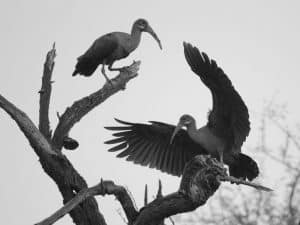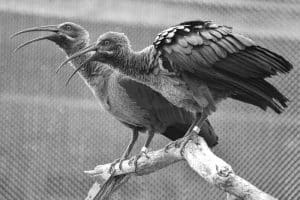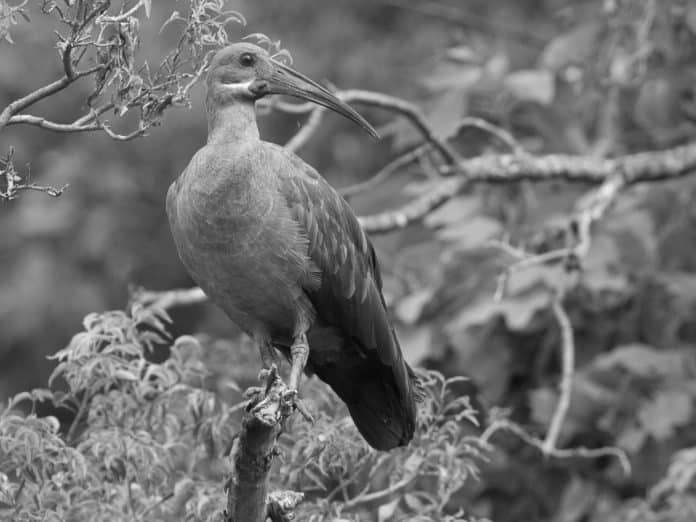Introduction to the Hadada Ibis
Welcome to the fascinating world of the Hadada Ibis, a graceful and striking bird that graces the wetlands of Tanzania. The Hadada Ibis in Tanzania, scientifically known as Bostrychia hagedash, is a unique species that has captured the attention of birdwatchers and nature enthusiasts around the world. With its distinctive appearance and intriguing behaviors, the Hadada Ibis holds a special place in the rich and diverse ecosystem of Tanzania. In this article, we will delve into the habitat, physical characteristics, behavior, significance, and conservation of the Hadada Ibis, offering insights into this remarkable avian species that calls Tanzania its home.
Habitat and Distribution of Hadada Ibis in Tanzania

The Hadada Ibis is primarily found in the wetlands, marshes, and grasslands of Tanzania, where it thrives in the lush and vibrant landscapes. These birds are commonly spotted in the coastal regions, including the wetlands of the Rufiji River delta and the shores of Lake Victoria. The diverse habitats of Tanzania provide the Hadada Ibis with ample opportunities to forage for food and establish breeding grounds, making it an integral part of the country’s avian biodiversity.
Physical Characteristics and Behavior of Hadada Ibis
The Hadada Ibis is easily recognizable by its striking appearance, characterized by a long and curved beak, vibrant plumage, and distinctive calls. These birds are medium-sized, with a height ranging from 76 to 86 centimeters, and they display a remarkable contrast between their dark plumage and iridescent wings. Known for their distinctive “haa-haa-haa-de-dah” call, the Hadada Ibis is a vocal species that adds an unmistakable soundtrack to the wetlands of Tanzania.
In addition to their physical traits, the behavior of the Hadada Ibis is equally captivating. These birds are often seen foraging in the shallow waters, using their long bills to probe for insects, frogs, and small aquatic creatures. Their graceful movements and adept hunting skills make them a sight to behold, especially during the breeding season when they engage in elaborate courtship displays.
Importance of Hadada Ibis in the Ecosystem
The Hadada Ibis plays a vital role in the ecosystem of Tanzania, contributing to the balance of its wetland habitats. As efficient foragers, these birds help regulate insect populations, particularly mosquitoes and other pests, thereby aiding in natural pest control. Furthermore, the foraging activities of Hadada Ibises contribute to the nutrient cycling of wetland ecosystems, influencing the distribution of flora and fauna in these diverse habitats.
In addition to their ecological significance, the presence of Hadada Ibises also serves as an indicator of wetland health. Their population dynamics and breeding behaviors offer valuable insights into the overall well-being of the wetlands, making them an important species for conservation monitoring and management.
Conservation Status and Threats to Hadada Ibis in Tanzania
Despite their ecological importance, the Hadada Ibis faces various threats in Tanzania, including habitat loss, pollution, and human disturbances. Wetland degradation due to agricultural expansion and urban development poses a significant risk to the habitats where these birds reside. Additionally, the indiscriminate use of pesticides and chemicals in agricultural practices can have detrimental effects on the food sources of Hadada Ibises, leading to potential declines in their populations.
Furthermore, the illegal trade and hunting of birds, including the Hadada Ibis, contribute to the challenges faced by conservation efforts. With these threats looming over their existence, the conservation status of the Hadada Ibis in Tanzania requires concerted efforts to mitigate the impacts and ensure the long-term survival of this iconic species.
Best Places to Spot Hadada Ibis in Tanzania

For birdwatchers and nature enthusiasts seeking to observe the beauty of the Hadada Ibis in its natural habitat, Tanzania offers a multitude of ideal locations. The wetlands of the Selous Game Reserve, the Serengeti National Park, and the Ngorongoro Conservation Area are known for providing excellent opportunities to spot these graceful birds. The lush surroundings and diverse ecosystems of these protected areas create a perfect environment for encountering the Hadada Ibis amidst its wetland haunts.
In addition to these renowned wildlife reserves, the coastal regions of Tanzania, including the wetlands along the shores of Lake Victoria, present prime birdwatching spots for observing the Hadada Ibis in its natural element. These areas offer a blend of scenic beauty and avian diversity, making them sought-after destinations for birdwatching enthusiasts.
Tips for Birdwatching and Photographing Hadada Ibis
When embarking on a birdwatching adventure to observe the Hadada Ibis, it is essential to exercise patience and attentiveness. These birds are often found near water bodies, where they engage in foraging and social interactions. By positioning oneself strategically and remaining still, observers can witness the elegant movements and behaviors of the Hadada Ibis without causing disturbances.
For photographers seeking to capture the beauty of the Hadada Ibis, utilizing long lenses and maintaining a respectful distance are key considerations. By being mindful of the bird’s comfort and natural behaviors, photographers can immortalize the striking features and captivating moments of the Hadada Ibis in their images, preserving the essence of these magnificent birds.
Cultural Significance of Hadada Ibis in Tanzania
Beyond its ecological role, the Hadada Ibis holds cultural significance in Tanzania, where it is revered in local folklore and traditions. In some communities, the unique calls of the Hadada Ibis are associated with omens and mythical beliefs, adding a layer of mystique to the presence of these birds in the cultural tapestry of Tanzania. Moreover, the elegant appearance of the Hadada Ibis has inspired artistic representations and symbolic references in indigenous art forms, showcasing its enduring influence on local heritage.
The presence of the Hadada Ibis in Tanzanian culture reflects the deep connection between people and nature, highlighting the intrinsic value of wildlife in shaping traditions and narratives within the country.
Research and Conservation Efforts for Hadada Ibis
In response to the conservation challenges faced by the Hadada Ibis, various research and conservation initiatives have been established to safeguard the welfare of these birds in Tanzania. Research studies focusing on the habitat preferences, breeding behaviors, and population dynamics of the Hadada Ibis contribute valuable data for conservation planning and management. By understanding the ecological requirements and vulnerabilities of these birds, conservation efforts can be tailored to address specific threats and prioritize habitat protection.

Furthermore, collaborative conservation projects involving local communities, governmental agencies, and non-governmental organizations play a crucial role in promoting the conservation of the Hadada Ibis. These initiatives encompass habitat restoration, community engagement, and advocacy for sustainable practices to ensure the preservation of the wetland ecosystems that are essential for the survival of the Hadada Ibis.
Conclusion
In conclusion, the Hadada Ibis stands as a symbol of grace and resilience in the wetlands of Tanzania, embodying the intricate balance of nature within its vibrant plumage and distinctive calls. As an integral part of the country’s avian diversity, the Hadada Ibis enriches the ecological tapestry of Tanzania and holds a special place in both natural and cultural realms. Through concerted conservation efforts, research endeavors, and responsible ecotourism practices, the Hadada Ibis can continue to thrive in its wetland habitats, captivating the hearts and minds of those who seek to witness the beauty of this remarkable species.
The enchanting presence of the Hadada Ibis serves as a reminder of the interconnectedness of all living beings, inspiring a collective commitment to preserve the natural wonders that enrich our world.

































